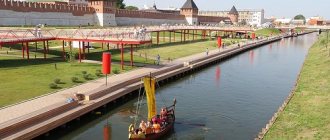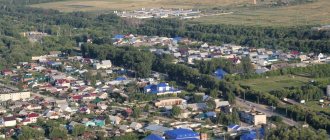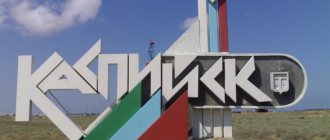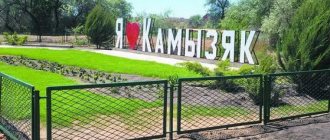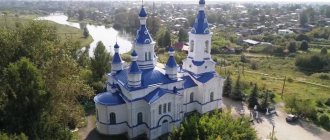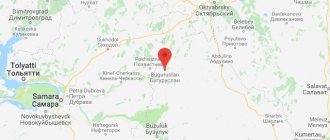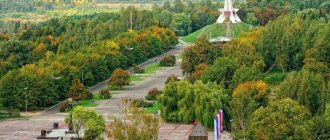History of the creation of the monument
The city of Tula has been a major industrial center since the beginning of the 18th century. Here today there is an arms factory, opened by decree of Peter the Great, as well as large steel and machine-building enterprises. Many city residents work at these facilities, and for them Levsha Leskova is a real national hero. The issue of creating a monument to the Tula literary hero himself was actively discussed in the 80s. After a competition of sculpture sketches, the best option was chosen. And already in 1989, Lefty was cast in bronze at the Tula Mashzavod. The author of the chosen project is the talented sculptor Bronislav Krivokhin. Initially, the monument was installed on the territory of the plant, and it was inaccessible for inspection by tourists and city residents. Almost twenty years later, in May 2009, the administration of the enterprise donated the sculpture to the city and moved it to a city street.
On the subject: Tomris Inger: biography, films and TV series, photos
Volgograd
There are no prophets in their own country, but there are heroes. And not those appointed by an imperious hand, but the true ones. But people don’t write out forms for their heroes; they can only immortalize them in a fairy tale. He immortalizes, and then he himself wonders, was there... a hero? We are compiling our “Census of Heroes” - a series of “Re:Actions” materials dedicated to people about whom fairy tales have already been written or will only be invented. About those you can already be proud of.
Cross-eyed drunkard
It’s very Russian to make a cross-eyed drunkard the hero. In Rus', only such people at all times were the bearers of goodness and justice, and at the same time the engines of progress: it would seem that simple and unpretentious Old Russian boys would either shoe a flea, or saddle a stove, and they wouldn’t fight with someone for their native land with bread. feed... Ivanushka the Fool and Ilya-Muromets, people's favorites, are in fact lazy and rowdy. They look simple, “like three kopecks,” but they are careerists and cunning. No matter how much good heroes fight with bad ones, if you look closely, both of them are smeared with the same world. Leshy, Vodyany, Koshchei and even Baba Yaga look and behave as if they had been drinking until the morning, and together. In general, whatever one may say, our heroes are far from ideal, to put it mildly. But to put it bluntly, they are just drunks and freaks, albeit cute ones. That’s probably why they seem real.
So Nikolai Leskov, who came up with “The Tale of the Tula Oblique Lefty and the Steel Flea,” could not imagine that his hero would become not just “the pride of the Tula land,” but a national symbol of skill. No more, no less.
Meanwhile, almost everyone has already forgotten that the flea, which was so cleverly shoed in Tula, was “Aglitsky” and that she could no longer dance with horseshoes - the gunsmiths ruined the delicate overseas work. By the way, to be precise, it wasn’t Lefty who did those horseshoes, he wasn’t the one who shoed the flea, but someone else—it was an artisanal job. And the legendary master himself, according to Leskov, only forged nails to attach horseshoes, and from an important trip to England he brought nothing at all - the understanding that guns cannot be cleaned with bricks. And he is more concerned about this than the Minister of War or even the Emperor himself...
Gunsmith
Leskov admitted that he invented Lefty. In Tula they could not come to terms with this and began to search. And whoever seeks will always find. Found: Lefty is Alexey Surnin, a famous Tula engineer-inventor.
According to the “Tale...”, Lefty lived and worked under Nicholas I. Surnin - a hundred years earlier, under Catherine II, Paul I and Alexander I. Bloch, of course, is pure fiction from a popular saying, but, one way or another, Lefty in England really got it. This is the main argument of Surnin’s supporters: he was really sent to England to study. True, together with another candidate for the role of Lefty - Yakov Leontyev. But no legend came of it: he went on a spree in a foreign land and either disappeared or simply got married. A defector, in general.
And Surnin turned out to be diligent, savvy and hardworking. He lived comfortably abroad, earned quite decent money and was in good standing with the British. His successes impressed the Russian ambassador Vorontsov, and before returning home, he handed him a letter for Potemkin, in which he recommended using Surnin so that he could bring maximum benefit to Russia and its army. Vorontsov wrote that the master is able to “put into action the knowledge acquired in England” in such a way that “the Russian army will receive such benefits in correcting instruments for guns, carbines, rifles and pistols, which cannot be bought for any money.” In general, Surnin justified the trust of the highest persons who sent him abroad, and fifteen years later he returned greatly successful in the arms business. On the way, unlike Lefty, he didn’t drink, didn’t hurt his head in the hospital and didn’t lose his documents, got to Tula normally, passed on his experience and even more.
Smuggler and spy
Along with his experience, Surnin illegally - with the help of Russian diplomats - exported from England “up to one and a half thousand different types of tools for sample.” Plus seven drawings of various machines and furnaces used in weapons making. And seven more drawings with devices for producing all kinds of buttons, buckles, etc.
And, well, the spy was the talented gunsmith Surnin. He maintained contacts with one of the leading British engineers, Henry Knock, from whom he actually studied. At parting, he promised to tell us “what successes and machines will be discovered again” and, apparently, he kept his word.
Titular Councilor
Surnin really turned out to be a very valuable personnel; moreover, unlike Lefty, he was not a drunkard. True, its official status was sorted out for years. In the end, by a special rescript of Catherine II he was appointed “master of arms and overseer of everything related to weapons.” In this position, he brilliantly coped with the task entrusted to him to achieve the interchangeability of weapon parts. Lefty-Surnin organized a production where parts were made “with such accuracy that all parts of one gun could fit all the others.” Now this is called unification. Before Surnin, we had nothing like this: each product was one-piece, unique, and, therefore, spare parts for it had to be made by hand.
In 1806, Surnin received 1000 rubles as a “reward for excellent work and zeal for service” - a very, very decent amount for those times. A few years later he died in high esteem, having reached a position at the age of 44 that was practically impossible for a master gunsmith: despite the fact that a commoner could not rise above class XIV even theoretically, Surnin ended his life with the rank of titular councilor of class IX.
Not left-handed, but right-handed
Was Lefty left-handed? But that’s not a fact. Well, when did the craftsmen pay attention to who was working with which hand? If only the matter could be resolved. In addition, everyone was illiterate, the army over there, and they were taught to march according to the “hay-straw” principle. And Alexey Surnin, apparently, was not left-handed - there is no mention of this. And the name Levsha is more likely from Lev-Lev-Levsha... or Lavrenty, or Leonty, or Alexey - Lesha...
Gingerbread, but not a monument
Surnin's life story was restored relatively recently. After the Bolsheviks came to power, the state-owned Chulkovskoye cemetery, where Peter I had ordered the burial of gunsmiths, turned out to be abandoned, and the burial of the master was considered lost. And only 17 years ago, Tula local historians found the grave, and the remains of the tombstone were discovered in a cemetery dump. In Tula they never dared to call the grave of Alexei Surnin the grave of Lefty, but the legend lives on...
There is no monument to Surnin. And Lefty too. Either there is no money, or they can’t find a place. Although the base with the half-erased inscription “At this place will be installed...” is present. It was the emblem of the plant, and vodka, and was even printed on the famous Tula gingerbread cookies, but, alas, they never put it on a pedestal.
Ekaterina Lebedeva.
Monument to Lefty in Tula: description and photo
Today everyone can see the monument to Lefty. It is located near the territory of the Tulamashzavod, 200 meters from the main building (exact address: Mosina St., 2. It is almost impossible not to notice the monument; the figure of a literary character is installed on an impressive pedestal, lined with red granite. The stone base has the shape of a hexagon, on each face of which quotations from literary works are carved. Lefty is depicted in full growth, in one hand he holds a hammer, and in the other his main work - a savvy flea. Leskov's hero is dressed in simple work clothes and a traditional protective apron, his hair is pulled back from his forehead braid The figure radiates calm, self-confidence and pride.
Gingerbread Museum
Gingerbread is the calling card of the region. The first mention of Tula gingerbread dates back to 1685. Sweet treats from Tula are real works of art - of various shapes, sizes, colors, dedicated to different events. In the world, Tula gingerbread is considered one of the main souvenirs from Russia, along with matryoshka dolls.
The Tula Gingerbread Museum was opened in 1996 and delights city guests to this day. It stores a variety of gingerbread cookies, including those dedicated to memorable events - the Battle of Kulikovo, the Russian-Turkish War, the Patriotic War of 1812, etc. In addition, you can see with your own eyes the forms in which Tula confectioners baked the famous gingerbread cookies.
Address:
Tula, st. Oktyabrskaya, 45A
Coordinates:
54.211804, 37.622319
Portrait likeness or living legend?
The literary Lefty had a very real prototype that inspired the writer to create the story - the real-life Tula master Alexei Surnin. It is unknown what this man looked like; Leskov describes his hero as “slanting” and the owner of a birthmark on his face. The monument to Lefty in Tula is a collective image of a master gunsmith. The bronze figure is quite masculine, with well-developed muscles. Tula Lefty is stocky, but at the same time he looks quite harmonious and impressive.
On the topic: Hydraulic calculation of heating networks: concept, definition, calculation methodology with examples, tasks and design
Lunch according to the recipes of Tolstoy's wife
In the restaurant next to Tolstoy’s estate you can dine on a dish prepared according to Sofia Andreevna’s recipe.
Photo: Grigory KUBATYAN On the outskirts of Tula there is the Yasnaya Polyana estate. The writer Leo Tolstoy lived and is buried here. His house has been preserved, where Leo Tolstoy’s shirt, his paintings, furniture and library are displayed. On the shelf in the closet there is a book in English, “Leo Tolstoy and His Problems.” According to the museum's attendants, Tolstoy's main problem is visitors who try to photograph something as a souvenir and ruin the upholstery of old sofas with a flash. Therefore, you cannot use the camera at all.
There is a restaurant in the park next to the house. There they feed according to the recipes of Sofia Andreevna, Tolstoy’s wife: boiled potatoes and chicken.
Tula Kremlin
The historical center of the city, a monument of Russian architecture of the 16th century, a museum and a place that seems created for a leisurely promenade in the rays of the setting sun. For many, the Tula Kremlin served as the most important defensive outpost and the key point of the Zasechnaya Line, a series of fortifications against southern invaders. Particularly noteworthy are the exhibitions in the towers, as well as the majestic Assumption and Epiphany Cathedrals (the latter now houses the Museum of Weapons)
Address:
Tula, st. Mendeleevskaya, 12V
Coordinates:
54.195745, 37.619949
Kulikovo Field
The historical site of the famous Battle of Kulikovo in 1380 is located in the Kimovsky district of the Tula region, now it is a memorial museum-reserve of federal significance. The objects are dispersed over a fairly large area, but each of them is unique and interesting - the Museum of the Battle of Kulikovo, the Alley of Memory and Unity, the monument to Dmitry Donskoy, as well as the battlefield itself and stunning nature.
Military-historical festivals and battle reconstructions are often held here, which are incredibly interesting to watch.
MUSEUM AND MEMORIAL TO THE HEROES OF THE BATTLE OF KULIKOVO
Address:
Tula region, Kimovsky district, village. Monastyrshchino
Coordinates:
53.667944, 38.640861
MEMORIAL ON RED HILL
Address:
Tula region, Kurkinsky district,
Coordinates:
53.606072, 38.671801
MUSEUM OF THE BATTLE OF KULIKOVO
Address:
Tula region, Kurkinsky district, Mokhovoye village
Coordinates:
53.623503, 38.671730
